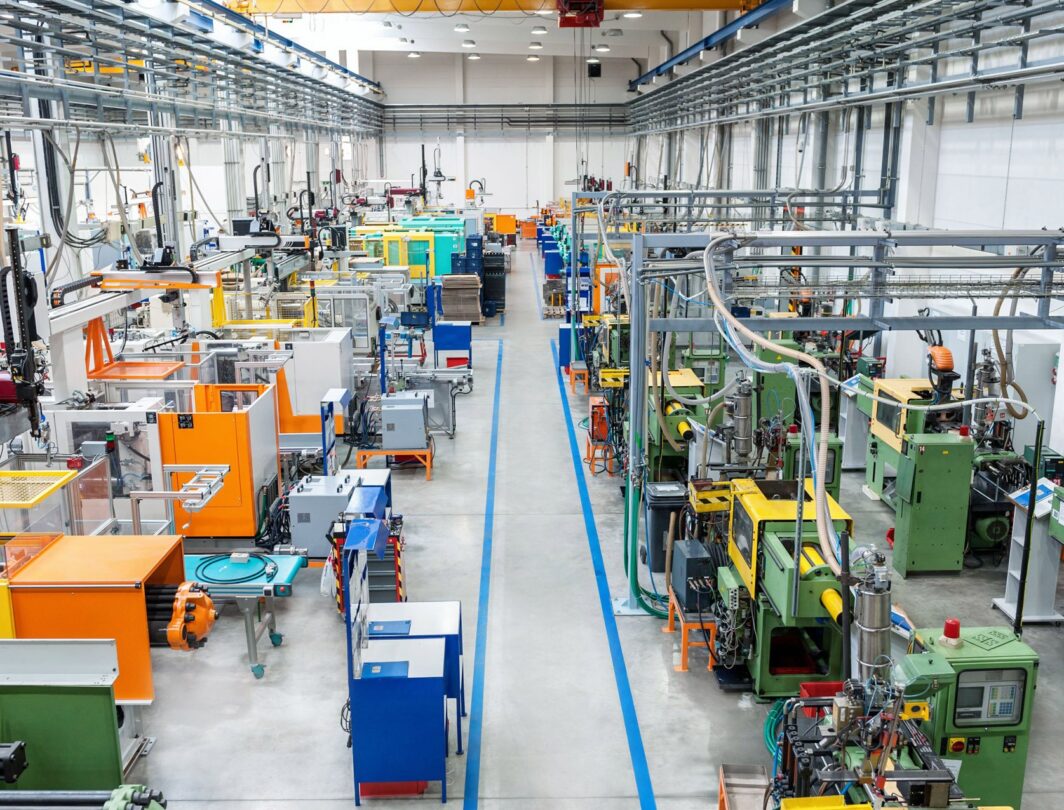Technology & Innovation
Artificial intelligence in the enterprise – Advice from the CTO of the world’s most well-funded AI startup

Is Artificial Intelligence (AI) worth the hype? There’s certainly a huge buzz around it, judging from the amount of noise coming out of global enterprise vendors and analysts. The research and advisory firm, Gartner, for example, believes that by 2020, AI will be pervasive in every product and service.
Gartner predicts that by 2025, the size of the artificial intelligence market worldwide is likely to grow to $2.4 billion. The largest proportions of revenue come from the AI for the enterprise applications market, that will see businesses pay to make use of image recognition, object identification, detection and classification, as well as automated geophysical feature detention.
Ten-year old Sentient Technology is an AI startup that specializes in ‘evolutionary algorithms’, inspired by natural selection and biological evolution. Evolutionary algorithms use mechanisms that imitate the evolutionary concepts of reproduction, mutation, recombination, and selection. They can be used in applications such as image processing, vehicle routing, mobile communication optimization, software engineering and the training of Artificial Neural Networks. These are used in tools like Google Maps, games (like The Sims), and even to aid in clinical cancer treatment decisions.
Distributed computing is a model where components of a software system are shared among multiple computers to improve efficiency and performance. EA can be massively distributed across multiple data centers, allowing lots of computing power to be drawn for data-intensive tasks.
Sentient Technologies started off in trading, where evolutionary algorithms were immediately seen of as useful in. But instead of going down the path of becoming a financial company, Sentient went down the path of becoming a technology product business, generating over $143 million in funding since its inception – and was the most well-funded AI startup worldwide between 2010 and 2016.
Arshak Navruzyan is Sentient Technology’s Chief Technology Officer. He’s well placed in providing insight into enterprise AI, being responsible for leading the engineering direction of Sentient’s core distributed AI platform. He is also the founder of Fellowship.AI, a machine learning fellowship program, which allows machine learning engineers to build real-world applications.
He said, “We’ve been working in a number of domains, ranging from investment management to digital marketing applications. The underlying technology is always the same – it’s a combination of the world’s largest and most capable distributed AI, which combines EA, deep learning, and scale compute – both GPU and CPU.
“To give you an idea of the scale we’ve worked with in the past, we published a paper in 2016 that showed how EA can do the work of a deep learning researcher. We took a hard problem in deep learning which was image captioning – and showed how evolutionary search through evolutionary algorithms could do the work of state-of-the-art deep learning architecture. In terms of performance, the evolutionary search performed better by 10 percent.”
Arshak says that Sentient is going through a period of discovery, understanding where its brand of AI could apply to different industries on a case-by-case basis. And to make it easier for businesses to adopt its brand of AI, they what to make sure that future customers won’t have to do a lot of systems integration.
He says, “Our long-term goal is to start applying our AI technology to a variety of industries, such as agriculture, energy, healthcare, and finance. We’re about creating vertically-focused applications that solve problems across industries and horizontals.”
Working with consumer technology manufacturers on deep learning
Arshak said that Sentient worked with business executives across all industries to understand their priorities and what problems they needed to solve, finding out where AI could help.
In manufacturing, for example, Arshak revealed that he was having conversations with companies that made hardware on a global scale, such as a tablet, PC, and smartphone manufacturers. He said that these companies were actively trying to deploy deep learning in their environment for applications such as facial recognition, digital identification capabilities, and speech recognition.
“When these companies want to integrate this AI into their platform, they come to the realization that the footprint of deep learning models is such that they have needed to live in the cloud.
“We’ve been working with a very large industrial organization in seeing how you could reduce the footprint of these deep learning networks, which often have hundreds of millions of parameters, down to a size which can be easily deployed at the edge of a network in a device and not in the cloud.
“With reliable connectivity, these devices have low bandwidth, so it’s essentially about getting state-of-the-art performance in deep learning networks which have been shrunk to fit in a small device.”
The automotive space
Arshak and Sentient have also been working with customers in the automotive space, a particularly interesting sector due to the amount of disruption that is happening partly due to electric and automated vehicles, as well as changing economic models such as ridesharing.
He says, “The automotive industry won’t be the same in 10 years. When you talk to technology leadership in that area, they are looking at lots of possible AI user cases such as self-driving cars, safety improvements and driver assistance.
Look at innovations by high-end automotive brands such as cruise control and adaptive breaking, as well as an increasing demand for autopilot capability. There’s a role for the next generation car to be more actively involved in the driving process, even if there’s a human is at the wheel.
Arshak adds, “Automotive leaders aren’t even sure the dealer distribution model is the way to go forward – to what extent should customers be able to have a car tailored to their preferences, and how much you should customize an individual car. They’re thinking of revolutionizing the car buying process.
“Everything is on the table, such as the way consumers are engaged with, the economic model and even the nature of the product. With AI, there are lots of ways it can disrupt this industry.”
The importance of AI and automation to business decision making
With globalization and the increase of digital supply chain network complexity, the larger the amount of data that will be generated and the greater the possibility that important business decisions can be made in a qualitative fashion. Arshak feels that supporting better decision making through data is one of the most important benefits of AI and automation.
He says, “I think it’s going to be harder for human analysts to keep up with this volume of data and to deliver consistent high-quality decision making, so for me, AI is first and foremost about automation.
“I don’t think we’re at the point where we can completely replace human analysts, because a lot of business use cases require human judgment. But we need automation to scale up a business to keep up with demand from the customer side. It’s hard to do it any other way.”
The moral obligations of AI
As well as the hype around AI, it has also inspired famous figures in science and technology to highlight their perceived dangers around the technology. Stephen Hawking famously warned that AI could end mankind, while Elon Musk had described it as an ‘immortal dictator from which we would never escape’.
Arshak isn’t a policy person, but he did share an opinion about what the real dangers of AI were. “I think we’re worried about the wrong things. My biggest fear short-term is about misapplications of AI. You hear examples where people are feeding images into an AI program, and for example, classifying their sexual preferences or whether they are a criminal based on this data.”
“My biggest fear is seeing people who don’t know what they’re doing making inadequate models that will be the basis of important decisions in areas like criminal justice, approving loans or recruitment for example.
“Not that AI will become this evil overlord – there’s no evidence to support that. It’s more about people misusing AI and trusting judgments that are biased and unscientific in nature.
Advice for senior executives interested in AI
What advice would Arshak give to business leaders around taking advantage of AI, with many businesses looking to make their first steps? He believed that there was a propensity for lots of Fortune-level companies to set up a Silicon Valley innovation arm and make statements that they had people there being innovative. These organizations would have a laboratory, showcasing that they’re on the ‘bleeding edge’ because they’d brought in a name-brand researcher.
He said, “I don’t know if that’s going to have the transformative effect that they’re hoping for. I’ve seen a lot of companies in a lot of industries funnel tens of millions of dollars into that approach and not end up with much in the way of practical results, or intangible changes to their product offerings or business model. Then they might forget about it, get flustered and move on.
“Those businesses that are serious about AI have to start treating it as a core competency, not as a sideshow. It’s not about shiny labs and ticking boxes. The ones that succeed will make a serious investment and think along the lines of attracting and incentivizing skilled AI talent to work for them and grow their careers there.“Businesses won’t be known for their work with AI. Now if you want to do AI work you go to companies like Google, Open AI or Facebook. The average Fortune-level company needs to think about how they make themselves attractive to machine-learning researchers and data scientists. How can they amass enough of this type of talent to make a difference in the business problems they want to solve?
“The problems that automotive manufacturers need to solve with AI like the development of automated vehicles, changing their economic model and engaging better with consumers. These are not small issues that you solve out of a lab – it’s massive business transformation they need to achieve.”





Ask the author a question or share your advice